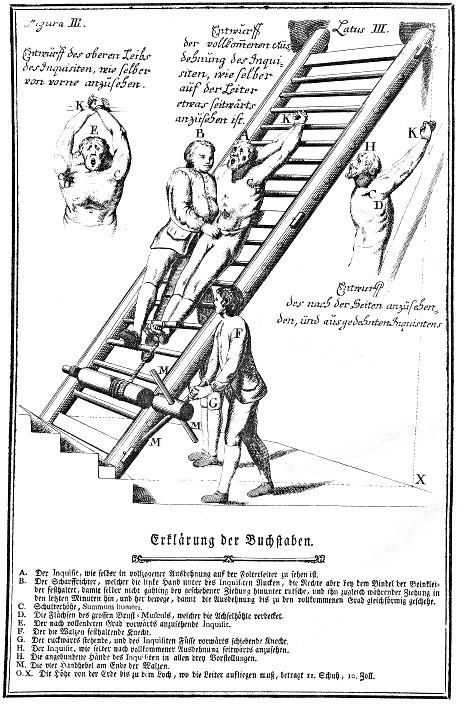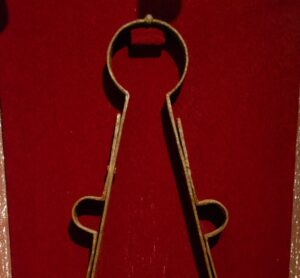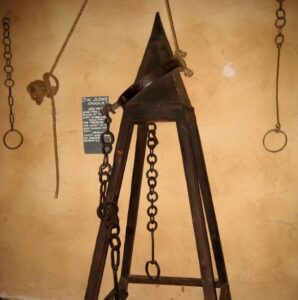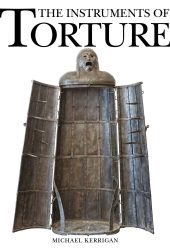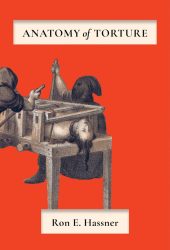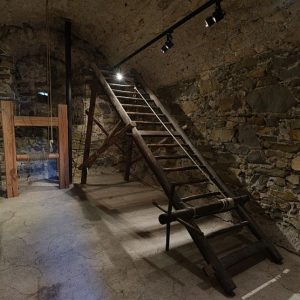
The rack was a notorious torture device used throughout medieval Europe and beyond. It consisted of a wooden frame with rollers at both ends. The victim’s limbs were tied to the rollers, and then the torturer would turn the rollers, stretching the victim’s limbs in opposite directions.
As the rollers turned, the victim would experience excruciating pain as their joints were pulled apart. The stretching could lead to dislocation of joints, tearing of muscles and ligaments, and in severe cases, even the breaking of bones. Sometimes, heavy weights were placed on the victim’s body to increase the tension and intensify the agony.
The Rack in Medieval Times
The rack was not only used to inflict physical pain but also as a means of extracting confessions or information from prisoners. The threat of being subjected to the rack was often enough to coerce individuals into compliance. The process was, more or less, like follows:
Preparation: The victim would be securely tied to the rack, usually lying flat on their back with their arms and legs stretched out and fastened to the rollers at each end.
Tensioning: The torturer would then turn the handles or cranks attached to the rollers, causing them to rotate. As the rollers turned, the ropes or chains attached to the victim’s limbs would pull them in opposite directions, stretching their body.
Stretching: As the tension increased, the victim would experience excruciating pain as their joints were gradually pulled apart. The stretching could cause severe muscle and ligament damage, dislocate joints, or even break bones, depending on the amount of force applied.
Interrogation: Often, during the stretching process, interrogators would demand that the victim confess to crimes or reveal information. The threat of further stretching or increased tension was used as leverage to coerce compliance.
Duration: The duration of the torture session varied depending on the intentions of the torturers and the resilience of the victim. Some sessions might last for hours or even days, with intermittent breaks to allow the victim to recover slightly before the torture resumed.
Medical Intervention: In some cases, torturers might employ skilled individuals to monitor the victim’s condition and prevent them from dying too quickly. This allowed for prolonged suffering without risking death too soon.
Aftermath: After being subjected to the rack, victims were often left with severe injuries, both physical and psychological. Many would be permanently disabled or scarred, and some might die from the trauma inflicted upon them.
Due to its brutal nature and the lasting trauma it inflicted, the rack remains one of the most notorious symbols of medieval torture and cruelty.
Was the Medieval Rack Real?
Yes, the rack was indeed a real torture device used throughout medieval Europe and beyond. Historical records, including illustrations, writings, and accounts from the time period, provide evidence of its existence and use. Additionally, archaeological findings, such as remnants of racks or references to them in legal documents, further confirm their reality.
While the specifics of the design and usage might have varied slightly over time and place, the general concept of the rack as a torture device remains consistent in historical accounts. Its cruel and barbaric nature is well-documented, serving as a grim reminder of the brutality of medieval justice systems.
While the basic design of the rack remained relatively consistent, there were variations in its construction and usage across different regions and time periods. Here are some real variations of the rack:
Examples of Real Racks:
The Spanish Donkey
Also known as the wooden horse or Spanish horse, this variation of the rack involved a triangular-shaped wooden frame with a sharp edge running along the apex. The victim would be seated on the sharp edge, with their legs weighted down. As the victim’s body weight pressed down, it would cause severe discomfort and potentially result in injury.
Examples of Real Racks:
The Bed of Aragon
This variation of the rack was reportedly used in Aragon during the medieval period. It consisted of a horizontal frame with rollers at each end, similar to the traditional rack. However, instead of stretching the victim’s limbs by turning the rollers, the victim would be tied to the frame and stretched by pulling ropes attached to their limbs.
Examples of Real Racks:
The Knee Splitter
While not a traditional rack, the knee splitter was a device used to inflict pain and immobilize the victim. It consisted of two spiked metal plates that would be placed on either side of the victim’s knee joint and then tightened together, crushing the knee and causing excruciating pain.

